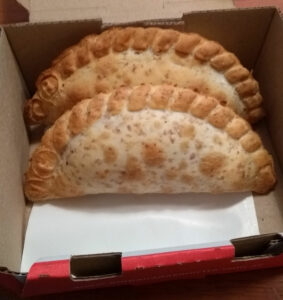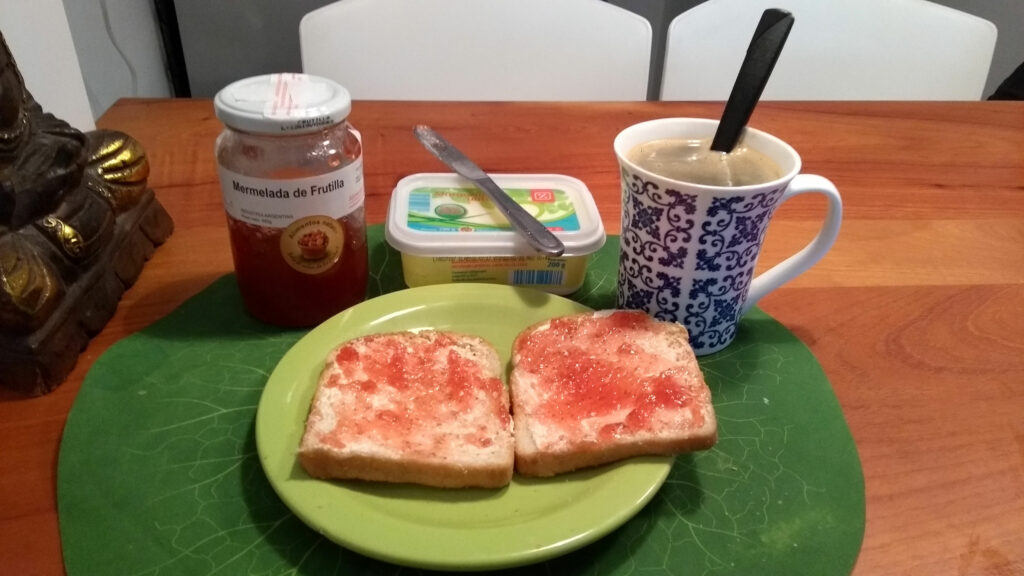One of my biggest fears about studying abroad was if I was going to be able to find food that I could eat, especially in Buenos Aires, Argentina, where I am currently studying. You see, I’m a lactose-intolerant vegetarian who is studying abroad in a country that’s known for its meat industry. I feel like I’ve been spoiled living in Burlington for the past two years, where restaurants are used to accommodating various dietary restrictions and vegan and vegetarian options are plentiful. Add in the fact that my careful studying of food vocabulary in Spanish didn’t completely prepare me for the regional variations of produce names (turns out, avocados are palta not aguacote; corn is choclo, not maiz; pineapple is ananá not piña, etc.), and needless to say, I’ve found eating abroad can be quite nerve-wracking.
Argentine Cuisine

If you visit Argentina expecting hot and spicy food, you’re going to be sorely disappointed. Argentinians don’t tend to like these types of foods, and while you can find some spicy options at the few Mexican restaurants around, they’re not plentiful. However, you can find a lot of pizza joints—which makes sense now that I’ve learned that Argentinian food is heavily inspired by its large population of Italian immigrants. Pizza, empanadas (semi-circle pastries that are typically filled with something savory like meat or cheese), and pasta are dietary staples. It’s also common to serve faina, a triangle of bread made of chickpea flour, alongside pizza. The most traditional food of Argentina is Asado, which is grilled meat. (It has its roots in Argentina’s early colonization when a lot of cattle were brought by Spanish conquistadors.)

Another essential to the Argentine diet is dulce de leche, a caramel-like substance made from condensed milk and sugar. As you can guess from its name, it’s incredibly sweet, and I, with my insatiable sweet tooth, cannot get enough of it. You can get dulce de leche on toast or waffles, in pastries, and in an alarming amount of ice cream variations. It also comes in alfajors, a cookie sandwich of dulce de leche that can be coated in coconut or covered in glaze, powdered sugar, or chocolate.
A Typical Day of Food
The meal schedule in Argentina was one of the hardest things for me to adjust to. Breakfast is about the same as in the U.S., basically before 10:30 AM. Lunch is slightly later than in the States, happening closer to 1:00 PM, and dinner is where I find the most difference since it’s normally not eaten until 8:30 PM at the earliest. In between lunch and dinner, there is also a small mealtime called merienda, around 5:00 PM, which is like afternoon tea.

Breakfasts are much smaller than is customary in the U.S. A normal breakfast in Argentina can consist of tea, mate (also known as yerba mate, a bitter, tea-like infusion made from the leaves of a South American shrub), juice and/or coffee, plus a baked good or toast. (Eggs are not something that Argentines tend to eat for breakfast.) From what I’ve observed, lunch customs have been Americanized in Argentina. For example, in most sit-down restaurants, there really isn’t a concept of “to go” or taking leftovers home, but in areas where lots of business people will go to grab a quick lunch, it’s easier to find food para llevar (to take away). My lunches almost always consist of a salad, and the salads always come with a piece of bread. An interesting thing to note with salads is that dressings aren’t very common here, so a drizzle of olive oil and vinegar is all I’ll get. It’s also pretty easy to find sandwiches, burgers, tarts, and stir-fry.

I don’t eat at merienda time every day, but when I do, I normally run across the street from my homestay and buy a factura, a catch-all name for pastries. The most popular pastries I’ve seen in Buenos Aires are the medialunas, crescent rolls similar to croissants.
My host mom cooks dinner for me Sunday–Thursday. The food can vary from a vegetarian burger to baked pumpkin slices and stir-fry, and pasta or “pies,” which are basically quiches that have a greater veggie-to-egg ratio. Most of the time, the main entrée at dinner is accompanied by a salad, but the Argentine definition of salad is looser than the American one—it’s not uncommon for the salad to just be tomatoes and carrots, or peppers and arugula.
The nice thing about being in Buenos Aires city is that it’s a big city, so there are a large variety of options that I might not be able to find if I was studying abroad in a rural area. Most restaurants will have some sort of vegetarian option, even if it is a random assortment of veggies on bread. I’m just happy I can find something to eat that accommodates my dietary restrictions.
What types of food would you like to try if you were studying abroad? Find out more about all the places you can study abroad (and eat) with Champlain.
Quinn Kanner is a junior and Professional Writing major, who is currently studying abroad in Buenos Aires, Argentina. Quinn is also a Student Ambassador for Champlain’s Admissions team and works as a Student Writer in Champlain’s Marketing Department.